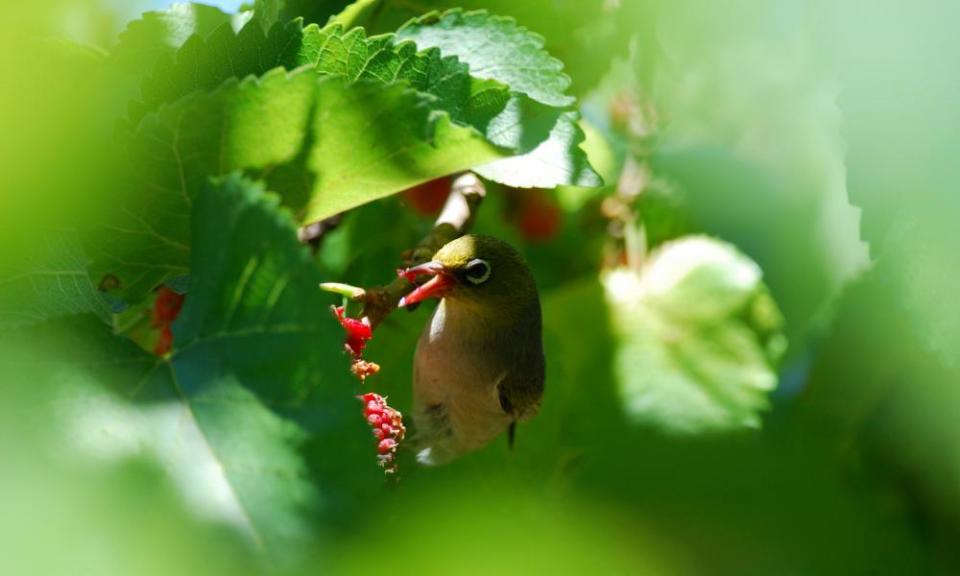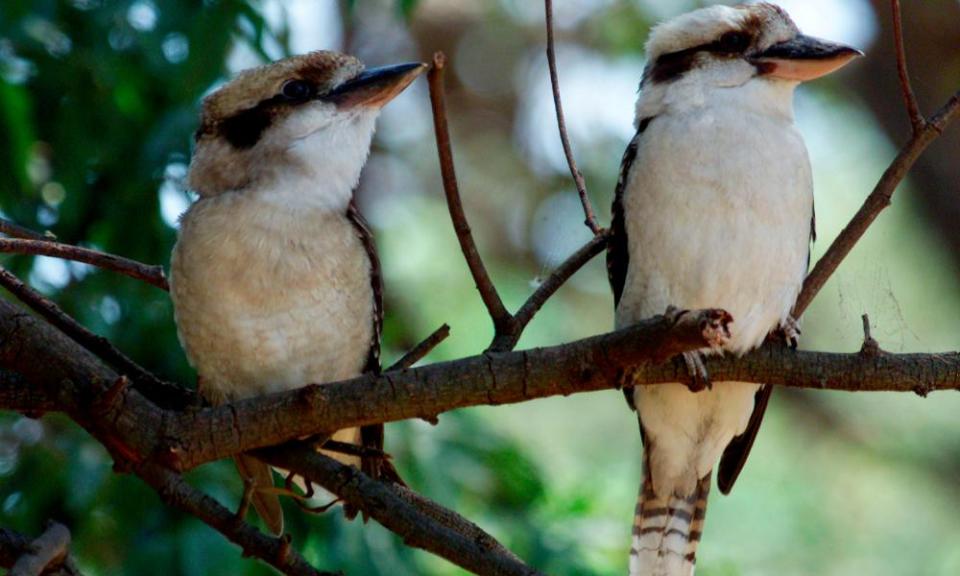Silvereyes are my lockdown’s silver lining

I’ve been working from home in Melbourne since mid-March 2020 – as an office worker, I’ve been one of the lucky ones in this pandemic. My housemate and I have a back room that we keep as a spare bedroom for when family or friends visit from interstate or overseas – but it quickly became apparent that that wouldn’t be happening any time soon, so I took it.
Related: Australian bird of the year 2021: vote now for your favourite #birdoftheyear
I set up my desk with a view out over the small back garden. The garden doesn’t get many birds, so each one is notable: the red wattlebird; the eastern spinebill; the spotted pardalote. There’s not much in the garden to attract them – I’m renting, so there’s a limit to what I can do – but I’m only a few minutes’ walk from a wealth of birdlife in the extensive bushland along Merri Creek and Yarra Bend Park. I’m lucky to live here, and I’m lucky to be able to afford to rent here, even though the exorbitant inner-city rent takes a third of my monthly income.
Lockdown has only reinforced my awareness of my own good fortune. Melbourne has endured more days of lockdown in this pandemic than any other city in the world (and, let’s not forget, some Melburnians have been locked down for longer than others: those in the public housing towers in North Melbourne and Flemington, and those in suburbs which were initially isolated in targeted lockdowns in 2020).

For much of the past 18 months we’ve only been able to go a few kilometres from our homes – to have extensive bush and parkland within those few kilometres is an incredible privilege. Some mornings I get woken up by the sound of kookaburras in the park by the creek at the end of my street.
Currently I’m getting woken up by a blackbird, who every morning for the past month – just as he did this time last year – starts singing from the top of the mulberry tree which dominates the garden. He doesn’t stop until night, repeating the same signature phrases over and over. He’s not native to Australia but then neither is the mulberry tree.
September and October are times of change in southern Australia: many birds are on the move, though we often don’t realise it. I had a grey fantail visit my garden a few weeks ago, just for a day: this cheerful little species is migratory, with populations moving about the continent, one subspecies replacing another as they go so that it appears that they’re constant until you look closer.
Another migratory bird is the silvereye, and right now I’m hearing them most days: weighing only a dozen grams, these tiny birds don’t seem as if they could be great travellers. But every year the Tasmanian subspecies flies hundreds of kilometres across Bass Strait to the mainland before heading back again a few months later. Their Māori name even means “stranger” because they self-introduced to New Zealand in the 19th century, flying from Australia all the way across the Tasman.
Now in the lengthening days I hear their winsome calls in my garden, “pew, pew” like a toy laser gun, or a whinnying like an unimaginably small horse. One recent afternoon a silvereye even performed a lengthy, pitch-perfect imitation of the blackbird, and from the blackbird’s usual perch atop the mulberry tree. For the past two years the silvereyes have bred nearby, and I’ve seen the young ones fluttering their stubby wings and begging for food high in the mulberry tree while their parents zipped back and forth in my garden, grabbing insects. They also feed on the mulberries, but everything feeds on the mulberries – I’m happy for them to do so. We need to learn to share what we have on this amazing planet, before it’s all gone.
By the second anniversary of the pandemic the seasons will be changing again, and the silvereyes will depart – perhaps up the east coast, perhaps over the water – and my garden will fall silent. Maybe I’ll be able to visit my family interstate again by then – one thing we’ve learned in this pandemic is to not try to predict the future.
In my city office building, staring from my desk at the photocopier, the view never changed; in lockdown, despite its drudgery and stress and the sameness of the days, as my select group of birds come and go, I can see first-hand how the world around me changes as it turns.

 Yahoo Movies
Yahoo Movies 